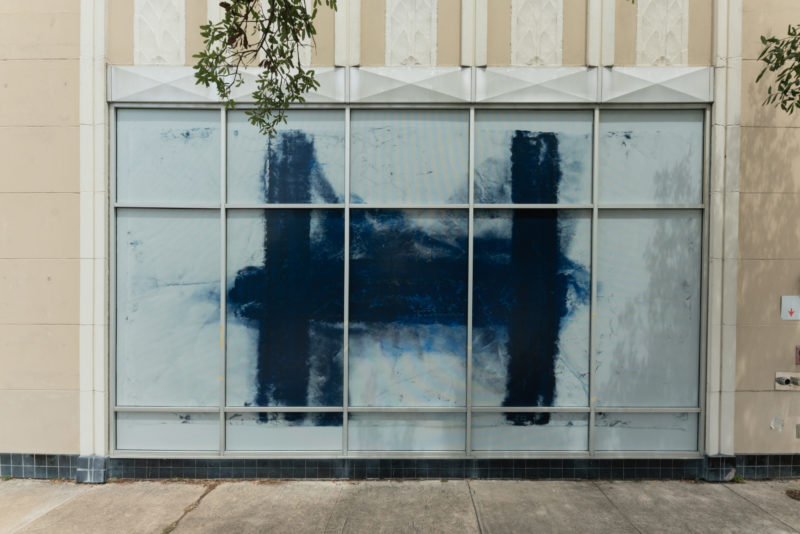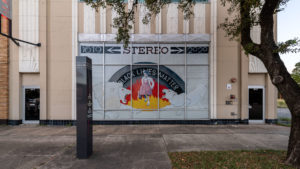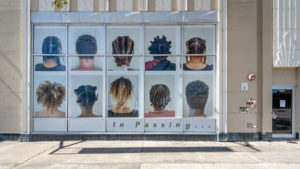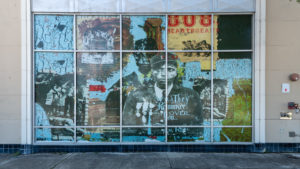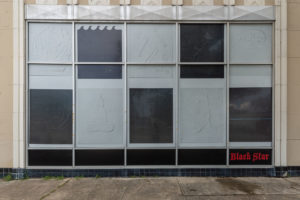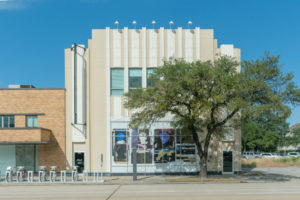
Archive
Jason Moran Barline Hopkins Deathbed
The Sankofa Project
Images by Ronald L. Jones.
Barline Hopkins Deathbed: Sankofa Project, Artist Statement
“Get up in the morning, turn around and just lay back down.” – Lightnin’ Hopkins
Barline Hopkins Deathbed is a tribute to legendary blues guitarist Lightnin’ Hopkins. His voice cut the air, and his guitar solos were a balm that healed souls. He rattled eardrums with his piercing voice, roused audiences to their feet to shake it off, made his guitar sound like a howling street dog, or slow-dragged a blues so slow it became a lullaby. Hopkins was a sound griot, documenting the world around him through his penetrating music.
When I think about Lightnin’, and especially the Blues, I think about how much he informs American sound. He lets the listener inside the sounds around him and then coats it in electricity. His Blues is a contrast to what is often termed “folk” music. The singer Georgia Ann Muldrow defines the Blues, and Black music broadly, as “high tech”. She refers to the way the music has always been at the forefront of our communal knowledge, celebration and therapy. The music is a communal technology, thus high tech, distributed widely from soul to soul. Lightnin’ distributes a quintessentially Houston “High Tech” music to the world, and when we listen beyond our ears, and see beyond our eyes, we can find it’s truth shining.
In the Les Blank documentary The Blues According to Lightnin’ Hopkins, the guitarist says
“The blues is something that is hard to get acquainted with, just like death.”
This complex description is what frequently makes musicians afraid of performing the Blues. The difficulty of the Blues lies in a technique called honesty. This Blues stares unflinchingly into the mirror, tracing the cracks in a smile to the lies in the eyes. It asks us to ask ourselves the hard questions. We can look beyond the lyrics about “loves long lost” for the deeper metaphors of extrication from homelands.
As a pianist, much of my sound is held in the way my fingers press the keys. My body is heard in the sound of the piano. I use the term “attack” or “touch” to describe my piano sound, thus my body sound. The paper pieces are made by draping delicate paper over the piano keyboard, then dumping a pile of dry pigment onto the paper, and then my hands begin playing. The frottage becomes the residue of the performance, essentially another way of recording the performance. It documents the moment of attack, the sustain, the glissando and the release. I have created a series of pieces dedicated to Hopkins’ moment of release: when lightning rests in earth. The shape of the “H” is also about the bridge between worlds/states. In 1982, at age 69, Sam ‘Lightnin’ Hopkins died of esophageal cancer and was buried nearby at the Forest Park Lawndale Cemetery.
“Yeah, you know the life I’m living
I’ve been living it for many a year.
I know the chariot was coming for me
But I didn’t know what kind of chariot was gonna take me away from here.”
– Death Blues by Sam “Lightnin’” Hopkins
About the Artist
Jazz pianist, composer, and artist Jason Moran was born in Houston, TX in 1975 and earned a degree from the Manhattan School of Music, where he studied with legendary pianist Jaki Byard. He was named a MacArthur Fellow in 2010 and is the Artistic Director for Jazz at The Kennedy Center. Moran currently teaches at the New England Conservatory.
Moran is deeply invested in reassessing and complicating the relationship between music and language, and his extensive efforts in composition, improvisation, and performance are all geared towards challenging the status quo. His 21 year relationship with his trio The Bandwagon (with drummer Nasheet Waits and bassist Tarus Mateen) has resulted in a profound discography for Blue Note Records and Yes Records, a label he co-owns with his wife, singer and composer Alicia Hall Moran.
The scope of Moran’s collaborators is extensive. He has collaborated with major art world figures as Adrian Piper, Joan Jonas, Glenn Ligon, Adam Pendleton, Lorna Simpson, and Kara Walker. His long-standing collaborative practice with his wife, mezzo-soprano and composer Alicia Hall Moran is groundbreaking; as named artists in the 2012 Whitney Biennial, they together constructed BLEED, a five-day series of performances stretching from readings to wellness to a ring shouts. In 2015, they participated in the Venice Biennial curated by the late Okwui Enwezor. His solo exhibition JASON MORAN traveled from the Walker Art Center, Boston Institute of Contemporary Art, Wexner Center for the Arts and the Whitney Museum of American Art. An exhibition of work created in 2021 called Bathing the Room with Blues will open at the Denver Museum of Contemporary Art. His work is in the collection of the Houston MFAH, Whitney Museum, MOMA, Walker Art Center, and Jazz at Lincoln Center.
About The Sankofa Project
Curated by Tierney L. Malone, The Sankofa Project is a multi-year examination of the historical events leading up to our current moment of social unrest and racial reckoning. Beginning with the people and stories that make up our own communities of Houston, this project aims to bring light to the events that have been censored or ignored in historical narratives in order to reinforce the racial oppression of Black Americans.
The Sankofa Project will commission three artists annually to create and present new work that is reflective of their own experience in contemporary America and related to the work of scholars and historians who are leading conversations on race and inequality. The artists’ work will be presented in Lawndale’s east-facing windows on Main Street and accompanied by a podcast and public program to inspire dialogue within our community.
“Sankofa” is the Ghanaian word most commonly translated as “one must acknowledge the past in order to move forward.” Thus, in The Sankofa Project, Malone brings together artists and our community to reflect upon the past, reminding us of the power of art to serve not only as the language of humanity but also its catalyst for change.
This program is funded in part by the City of Houston through Houston Arts Alliance.
About the Curator
Tierney L. Malone is a visual artist and modern day storyteller who uses the canon of African-American history and pop culture to create mixed media works that challenge contemporary culture and politics.
Malone has exhibited his art widely throughout Texas and the United States, including numerous solo exhibitions. His works are in the permanent collection of the Museum of Fine Arts, Houston; the Kansas City Jazz Museum, Kansas City, Missouri; Goldman Sachs, New York, New York; and the Federal Reserve Bank, Houston, Texas. He is the recipient of the Louis Comfort Tiffany Foundation Grant, a CACHH Visual Artist Grant, and a Kimbrough Visual Artist Grant.
Collaboration with the jazz community is also at the forefront of Malone’s practice, including commissions to create the jacket covers for jazz musician Don Byron’s 1999 CD, Romance of the Unseen, on the Blue Note Label and for jazz pianist Randy Weston’s 2003 performance at the Miller Outdoor Theater. In 2008, Malone completed two jazz-related major commissions: a limited edition print celebrating Da Camera of Houston’s 20th Anniversary and an outdoor mural entitled “Southern Sounds” for the Coleman Art Center in York, Alabama. Additionally, Malone is the creator of the Jazz Church of Houston and the host of the Houston Jazz Spotlight on 90.1 KPFT, both of which recognize and preserve Houston’s remarkable contribution to the musical genre of Jazz.
Born in Los Angeles and based in Houston’s historic Third Ward, Malone was raised in Mississippi and Alabama and considers himself a Southern Seed.
